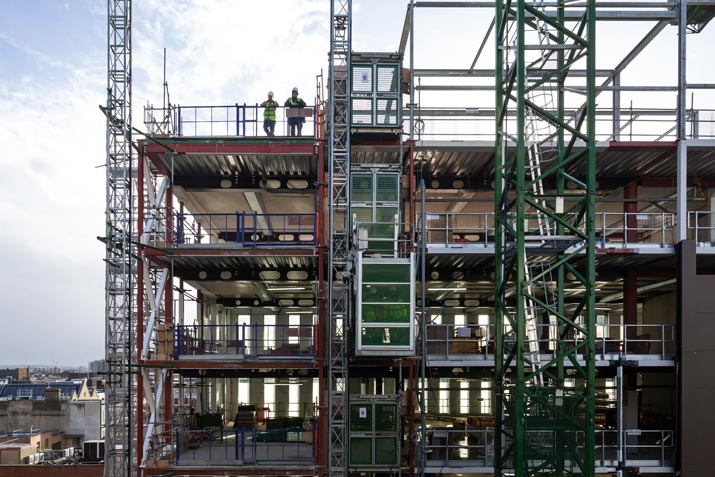

Bryden Wood to establish network of manufactured components for repeatable industrialised building construction.
Based in London with offices already established in Singapore, Barcelona, and Milan, they’re also opening a new office in Boston, MA. Founded in 1995, the firm now specialises in a value-oriented ‘kit-of-parts’ approach to design for manufacturing and assembly (DfMA)(industrialised construction).
Their North American expansion is being led by board director Jaimie Johnston MBE, together with Phil Langley, board director and head of their creative technologies division.
They’re already working with companies such as Equinix, Amazon Web Services, Boldt, Chandos, and DPR Construction on industrialised construction projects, and are positioning the company to better service these companies and develop new business.
Bryden Wood’s platform approach standardises manufactured components that are made offsite and assembled onsite, ensuring greater certainty about schedules and budgets. Their ‘platform approach’ also embed materials reuse and reductions in carbon into early stages of design.

ABOVE: Brydon Wood to establish network of standardised components.
The firm has also committed to working with tech clients to develop design technologies such as “digital configurators”. These ‘configurators’ rely on algorithms to generate thousands of design and engineering solutions for sites around the world.
By developing solutions that allow appropriate levels of repeatability in such building types as data centres, without sacrificing quality, “we’re helping [clients] transform their businesses,” said Johnston in a published statement.
The first major project to be delivered utilising their industrialised construction methodology is The Forge in London. It’s scheduled for completion towards the end of this year, and is comprised of two sustainably focused nine-story commercial buildings.
Its projected efficiencies include a nearly 20 percent reduction in embodied carbon per square meter, a 36.4 percent reduction in the substructure, and a 20.2 reduction in superstructure and façade materials. Johnston said that the buildings’ façade panels could be installed in just 7½ minutes each.
Watch their PRiSM 2.0 Housing Design Configurator showreel here:
Scalability via industrialised construction for these building types is where clients are most likely to benefit from improvements in design and delivery, the firm asserts. Johnston also foresaw Bryden Wood doing a bit more multifamily design in the U.S. than it does within its home market.
Phil Langley says: “Clients want more control in the way they make key decisions about their future assets. They want to get to market faster, be more productive, and achieve their climate goals. This means developing new, ownable, creative technologies to enable automated design. We develop algorithmic design software for the global data center and transport sectors that simply isn’t being developed anywhere else.”
See: www.brydenwood.com
CLICK HERE to return to the home page for more articles.